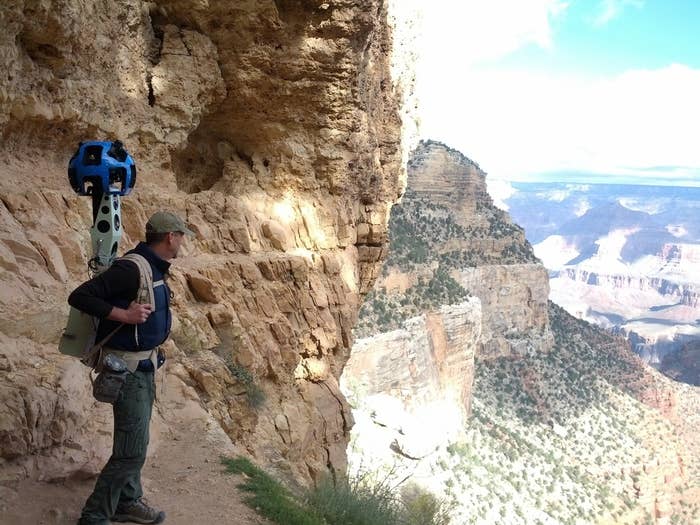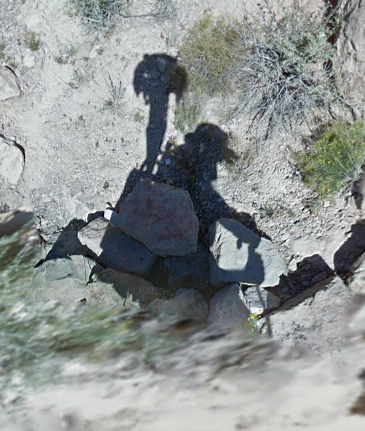
The image of working at Google usually involves a laptop, a luxurious campus and loads of free food. But for a select few, it also involves a backpack and a good pair of boots. Instead of coding, these Google employees hike.
The Google Street View team has been mapping the world via cars, trains, trikes, trolleys, and snowmobiles for years. But last October, they started using ergonomic backpacks, called "Google Trekkers," equipped with the same kind of cameras used in the Street View Cars, allowing the company to capture imagery of places only accessible by foot.
"You grab the backpack, turn it on, and forget about it. You are just walking along and you just go," says Steve Silverman, who trekked the Grand Canyon's rim and the nearby Meteor Crater, normally off limits to the public. So far, he's hiked and documented 75 miles of the Grand Canyon and the Yakusugi Forest in Japan.

Any overnight trekker expedition involves teams of at least two — one to carry the regular gear such as the tent and food, and the other the camera. The camera pack only weighs about 42 pounds — about the same haul you'd take on an medium-length backpacking trip.
Every few steps, the camera, which features 15 lenses angled in different directions, snaps full-coverage photos. Google's software corrects for unusual movements and even the difference in height of each hiker. Hikers can look anywhere they want and move at any pace.
The hardest part, according to Silverman? Getting everybody up and organized at 5 a.m., in time to recreate a full-day hike down to the canyon floor.
Silverman and fellow Googler Ryan Falor on the trail.

Plenty of hikers were captured in the footage (their faces were blurred out), as well as a mountain goat (his was not). The group of about 30 Japanese tourists, eager to have their photos taken with the latest Google gadget, didn't make the final cut.
They are still cleaning up the final images, but haven't revealed any especially entertaining aberrations yet.

Considering the circumstances, the canyon expedition was pretty smooth; there was one small snag when someone misconnected a USB cable, but it was quickly fixed. "With five systems you expect something to go wrong," says Silverman. "We were all surprised that it went off without hitch." The trekker device, it turns out, is fairly easy to use. The team in Japan only had a few hours of training prior to taking off into the snowy forest.
While Google won't reveal exactly where the teams are heading next, the company has its sights set on America's national parks. But it's not just parks. Silverman is most excited about the prospect of trekking through the alleyways, pedestrian bridges, plazas, and canals in Venice, Italy.
